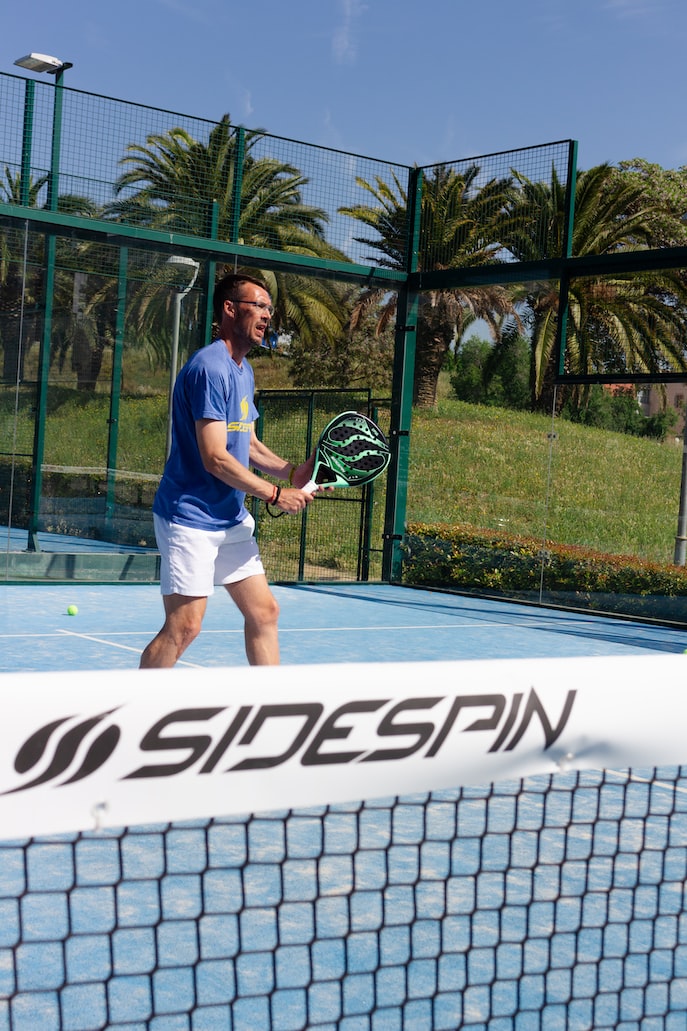Understanding Basic Padel Strategy: A Beginner’s Guide
3 min read
Understanding Basic Padel Strategy: A Beginner’s Guide
Are you new to the world of padel and wondering how to get started? One of the most important things to learn is basic padel strategy. Whether you’re playing a casual game with friends or competing in a tournament, having a solid understanding of the basic strategies will give you the upper hand.
Let’s dive into the world of basic padel strategy and explore the ins and outs of the game.
The Basics of Padel
For those who are new to padel, it is a racket sport that is played on a court with walls. The game is played in doubles, with two players on each side of the court. The objective is to hit the ball over the net and onto the opponent’s court without letting it bounce on the ground.
Now that you understand the basics of the game, let’s get into the essential strategies you need to master to succeed in padel.
Basic Padel Strategy: Staying in Position
One of the most critical aspects of padel is staying in position. In padel, it’s essential to always be in the right place at the right time. If you’re not in the correct position, you risk leaving gaps on the court that your opponents can exploit.
The Diamond Formation
When serving, both players on the serving side should stand close to the net, forming a diamond shape. The player that will serve should stand at the back of the diamond, and the other player at the front.
However, when receiving serves, both players should be at the back of the court to give them more passing options.
Basic Padel Strategy: Communication
Whether you’re playing with friends or in a competition, communication is vital in padel. Good communication ensures that you and your partner work together as a team and stay ahead of the game.
Verbal and Non-Verbal Communication
In padel, communication can be verbal or non-verbal. Verbal communication means that you and your partner speak to each other to discuss tactics, strategy, or to encourage each other.
Non-verbal communication, on the other hand, refers to the signals you give your partner during the game. This can be in the form of hand signals or body language, such as pointing to where you want your partner to go or moving in a specific direction.
Basic Padel Strategy: Layers of Defense
Another important aspect of basic padel strategy is the layers of defense. In padel, you must always have a plan for defending the court, and this includes layers of defense to keep your opponent’s shots under control.
The First Layer of Defense
The first layer of defense is the net. Being close to the net ensures that you can react quickly to any balls that pass through. The player at the net should aim to put pressure on their opponents by intercepting shots, forcing errors, and hitting volleys.
The Second Layer of Defense
The second layer of defense is the mid-court, which is the area between the net and the back of the court. Players in the mid-court must work together to cover as much ground as possible, anticipate their opponent’s shots, and control the center of the court.
The Third Layer of Defense
The final layer of defense is the back of the court. Players at the back must keep an eye on the ball trajectory and adjust their positions accordingly. The objective here is to return balls accurately and hit powerful shots that can put your opponents on the back foot.
Final Thoughts
Padel is an exciting sport that requires strategy, teamwork, and communication. By mastering the basic padel strategy, you can improve your game and take it to the next level. Remember to stay in position, communicate with your partner, and have a layered defense to ensure you stay ahead of the game.
We hope this beginner’s guide to basic padel strategy has been informative and fun to read. Happy playing!






